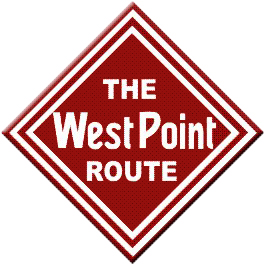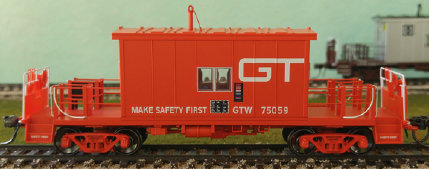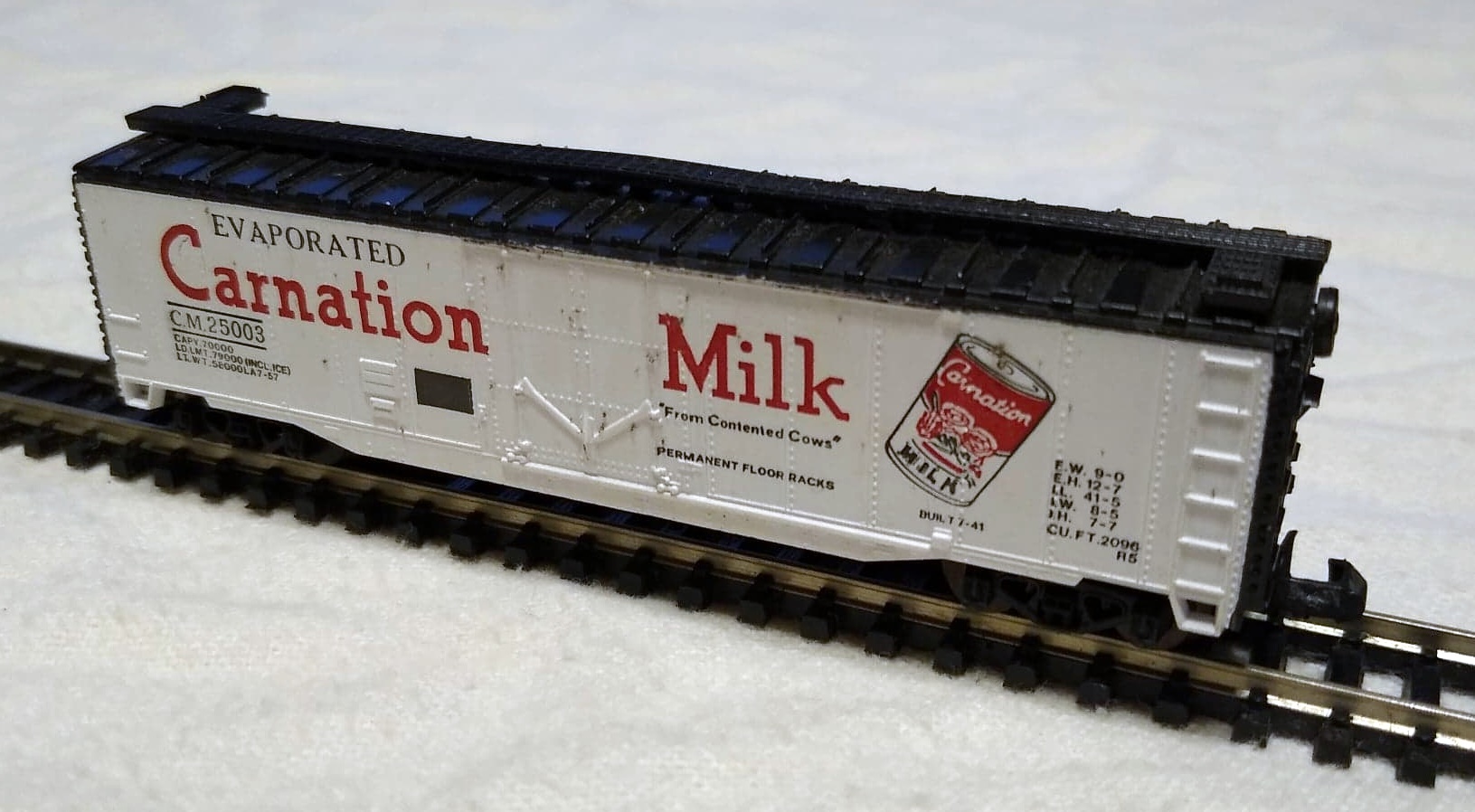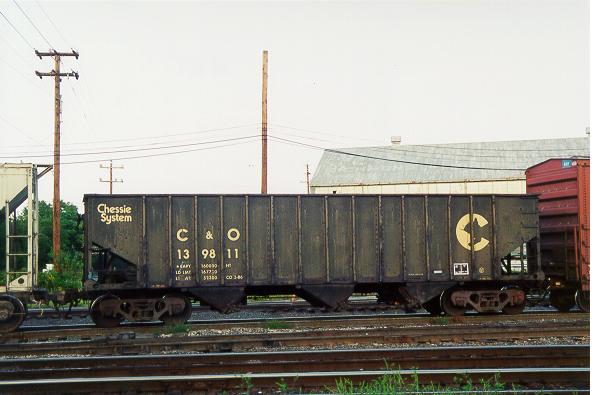Prototype History: 70 ton 3-bay rib side hoppers were a common sight on most railroads in the 20th century, These cars were built by most of the major railcar manufacturers as well as by many of the Class I railroads themselves. They were used for non weather sensitive matrial such as coal and were designed to take a beating.
Road Name History:  Also know as the 'Western of Alabama', The Western Railway of Alabama was formed in 1883 as a result of the reorganization of the Western Rail Road of Alabama and was converted from 5’ gauge to standard gauge in 1886. This pocket size Class 1 railroad linked Selma and Montgomery, Alabama with West Point just over the Georgia border 133 miles to the east. There they connected with their sister road Atlanta & West Point. The two roads together were referred to as "The West Point Route" and were closely affiliated with the Georgia Railroad. Locomotives from the three companies moved freely across each other’s lines.
Also know as the 'Western of Alabama', The Western Railway of Alabama was formed in 1883 as a result of the reorganization of the Western Rail Road of Alabama and was converted from 5’ gauge to standard gauge in 1886. This pocket size Class 1 railroad linked Selma and Montgomery, Alabama with West Point just over the Georgia border 133 miles to the east. There they connected with their sister road Atlanta & West Point. The two roads together were referred to as "The West Point Route" and were closely affiliated with the Georgia Railroad. Locomotives from the three companies moved freely across each other’s lines.
WoA relied heavily on 4-6-0’s in the early part of the 20th century but would later build up a fleet of seven Mikados for freight service and four Pacifics for passenger service. The biggest power on the WoA consisted of five 4-8-2 mountains, three of which were former Florida East Coast engines that were repossessed by the bank during the Depression. WoA’s first diesels were switchers from Baldwin but it was EMD that would earn all of WoA’s road service locomotives until the end.
WoA hosted Southern Railway’s Crescent Limited between West Point and Montgomery for most of that train’s history.
Western of Alabama, Atlanta & West Point and Georgia Railroad were controlled jointly by L&N and Atlantic Coast Line (SCL after 1967.) As such, Western of Alabama was one of the "Family Lines." In 1983, all of the Family Lines roads were merged to form Seaboard System. Traffic was relatively heavy and the route continues today to be an important line in the CSX system.
Text Courtesy of Bluford Shops

WoA relied heavily on 4-6-0’s in the early part of the 20th century but would later build up a fleet of seven Mikados for freight service and four Pacifics for passenger service. The biggest power on the WoA consisted of five 4-8-2 mountains, three of which were former Florida East Coast engines that were repossessed by the bank during the Depression. WoA’s first diesels were switchers from Baldwin but it was EMD that would earn all of WoA’s road service locomotives until the end.
WoA hosted Southern Railway’s Crescent Limited between West Point and Montgomery for most of that train’s history.
Western of Alabama, Atlanta & West Point and Georgia Railroad were controlled jointly by L&N and Atlantic Coast Line (SCL after 1967.) As such, Western of Alabama was one of the "Family Lines." In 1983, all of the Family Lines roads were merged to form Seaboard System. Traffic was relatively heavy and the route continues today to be an important line in the CSX system.
Text Courtesy of Bluford Shops
Brand/Importer Information: Bluford Shops began in 2007 as a side project of two model railroad industry veterans, Craig Ross and Steve Rodgers. They saw a gap between road names available on N scale locomotives but not available on cabooses. They commissioned special runs of Atlas cabooses in Atlantic Coast Line, Central of Georgia, Monon, Boston & Maine and Southern plus runs on Grand Trunk Western and Central Vermont on the MDC wooden cabooses. While these were in process, they began to develop their first all new tooling project, 86' Auto Parts Boxcars in double door and quad door editions in N scale. By January of 2008, Bluford Shops became a full time venture. Along with additional N scale freight cars and their own tooling for new cabooses, they have brought their own caboose line to HO scale. They also have their popular Cornfields in both HO and N. The future looks bright as they continue to develop new products for your railroad.
The town of Bluford in southern Illinois featured a small yard on Illinois Central's Edgewood Cutoff (currently part of CN.) The yard included a roundhouse, concrete coaling tower (which still stands) and large ice house. Reefer trains running between the Gulf Coast and Chicago were re-iced in Bluford. Things are more quiet now in Bluford with the remaining tracks in the yard used to stage hoppers for mines to the south and store covered hoppers. Intersecting the IC line in Bluford is Southern Railway's (currently NS) line between Louisville and St. Louis. Traffic on this single track line remains relatively heavy.
The town of Bluford in southern Illinois featured a small yard on Illinois Central's Edgewood Cutoff (currently part of CN.) The yard included a roundhouse, concrete coaling tower (which still stands) and large ice house. Reefer trains running between the Gulf Coast and Chicago were re-iced in Bluford. Things are more quiet now in Bluford with the remaining tracks in the yard used to stage hoppers for mines to the south and store covered hoppers. Intersecting the IC line in Bluford is Southern Railway's (currently NS) line between Louisville and St. Louis. Traffic on this single track line remains relatively heavy.
Item created by: gdm on 2017-08-01 17:39:37
If you see errors or missing data in this entry, please feel free to log in and edit it. Anyone with a Gmail account can log in instantly.
If you see errors or missing data in this entry, please feel free to log in and edit it. Anyone with a Gmail account can log in instantly.










